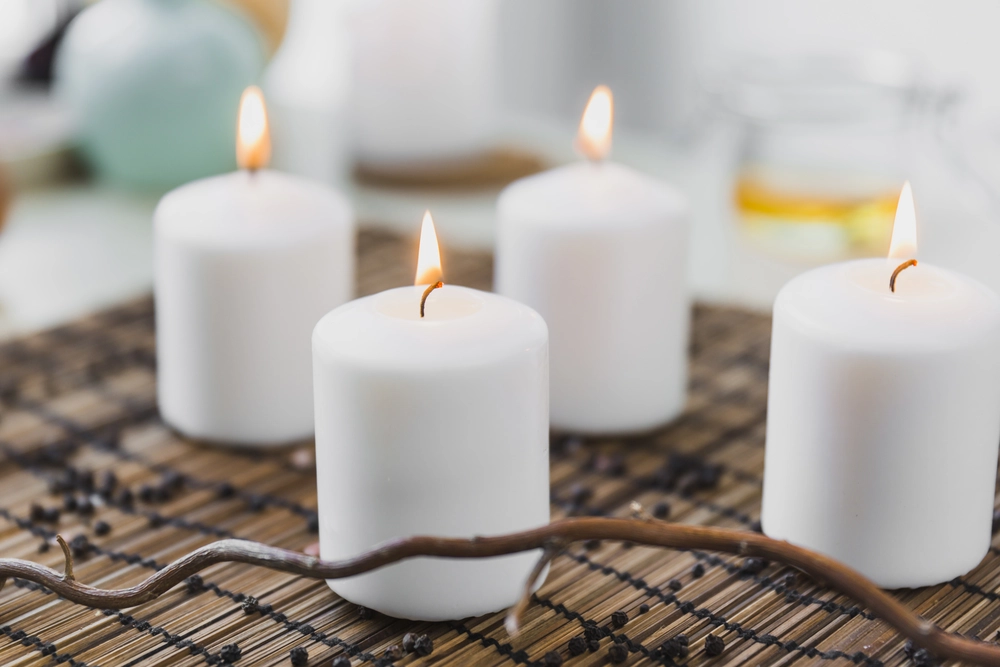Different Types of Candle Wax: Which One Is Right for You?

When you want to buy candles, you may feel confused because the store has candles with different types of wax. Wax is the main ingredient and fuel of the candle itself. Some types of wax commonly used in making candles such as soy, paraffin, beeswax, palm, rapeseed, and coconut. Each wax has its own characteristics and it will affect the duration of burning, the aroma produced, and how it impacts the environment. Well, in this article you will get the answer to the different types of candle wax.
Kinds of candle wax
By knowing the types and differences of each wax, you can choose a candle according to your needs and preferences.
1. Soy Wax
If you find a candle made from Soy wax, it means that the candle is made from soybean oil which has natural and environmentally friendly properties. Because it is sourced from plant materials that do not contain chemical compounds, soy wax candles produce cleaner combustion and do not produce soot. The melting point of this wax is also low so it burns slower, which means you will get a candle with a longer flame. Another characteristic of soy wax is its ability to bind and release aromas very well, so this material is often used in making aromatherapy candles.
2. Paraffin Wax
Paraffin wax is one of the common ingredients used in making candles. This material is commonly used due to various factors such as its cheaper price and abundant availability. Paraffin wax is made from refined petroleum, which makes it not a good choice for people who care about the environment. However, this is offset by the advantages of this material such as its good ability to bind colours, flexibility in the forming process, and strength when formed. This makes paraffin wax the most suitable material for making decorative candles with complex shapes and bright colours.
3. Beeswax
Beeswax is a natural wax produced by honey bees when making their nests. Wax made from this material is usually pale yellow to golden brown, depending on the source of the wax collected by the bees. Because it comes from honey bees, candles with this wax have a sweet, honey-like aroma when burned. In terms of melting point, beeswax has a higher melting point than soy wax, which means you get more time to smell the honey aroma. Just like other candles made from natural materials, burning beeswax does not produce soot. In fact, when you light it, beeswax releases negative ions that can clean the air from dust and pollutants, so that the air quality becomes better. With the various advantages of beeswax and its characteristics, beeswax is often used in making pillar candles, mantra candles, and aromatherapy candles.
4. Palm Wax
Palm wax is another option for those of you looking for environmentally friendly candles because it comes from palm oil. Candles made from this wax have a characteristic, namely a pattern like fine threads on the surface of the wax. Compared to soy wax and beeswax, palm wax has a harder and more solid texture. So when molded to follow a shape, it can maintain its shape well. This advantage makes palm wax often used to make decorative candles. Like candles made from other natural materials, candles with this material produce less soot so that they can still maintain the quality of the surrounding air.
5. Coconut Wax
Coconut wax is often considered one of the most environmentally friendly candles because it is made from 100% vegetable oil. Compared to other waxes, coconut wax has a very soft texture. This gives candles that use this material a smooth and shiny surface. Because of its texture which is not too dense, coconut wax is suitable for making candles in containers such as jar candles or tin candles. In terms of burning time, candles made from this material are the champions because they have a low melting point compared to other types of wax. Coconut wax is also often used in combination with other waxes, such as soy wax, to create a wax blend that combines the advantages of each.
6. Rapeseed Wax
Rapeseed wax has a smooth texture and is slightly harder than soy wax, making it suitable for a variety of candles. The natural colour of rapeseed wax tends to be creamy white, which allows for good colouring without changing the original colour. The melting point of rapeseed wax is between that of soy wax and beeswax, giving it a stable burning combination and a relatively long burn time. In addition, rapeseed wax has a very neutral natural aroma, making it perfect for scented candles as it will not interfere with or change the added scent.
Choosing the right candle isn’t just about scent or appearance, it’s also about understanding how the type of wax used can affect your burn quality, environmental impact, and overall experience. If you’re looking for a natural and eco-friendly candle, soy wax, coconut wax, or rapeseed wax may be a great choice. For those who value tradition and the power of nature, beeswax may be what you’re looking for. Meanwhile, palm wax offers a unique aesthetic with its attractive crystalline texture. When shopping for candles, consider your intended use and personal preferences to find the wax that best suits your needs.
